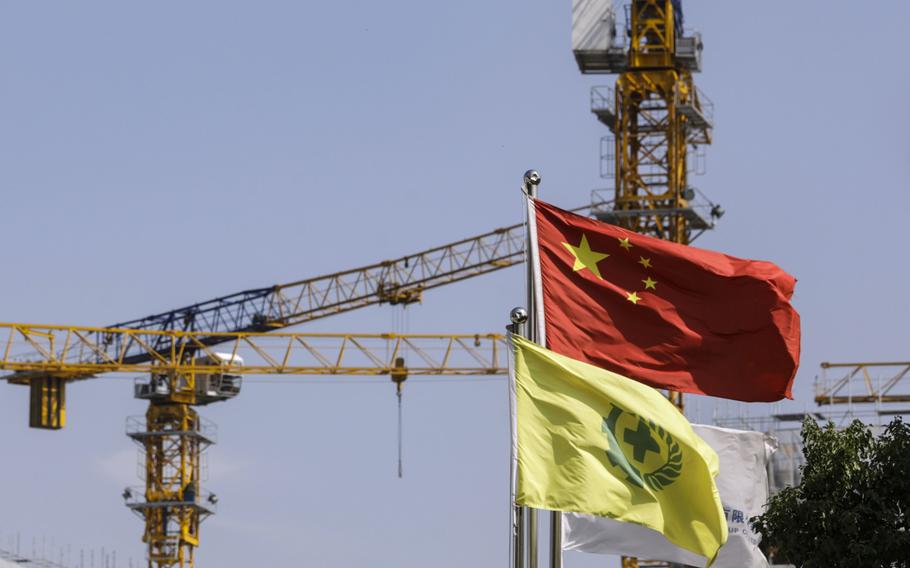
A Chinese flag is flown near a construction site for residential buildings in the Fengxian district of Shanghai on Oct. 17, 2020. (Qilai Shen/Bloomberg)
China’s hidden local government debt has swollen to more than half the size of the economy, according to economists at Goldman Sachs, who said the government will need to be flexible in dealing with this as revenue is already under pressure due to a slowdown in land sales.
The total debt of local government financing vehicles rose to about 53 trillion yuan ($8.2 trillion) at the end of last year from 16 trillion yuan in 2013, the economists wrote in a report. That’s equal to about 52% of gross domestic product and is larger than amount of official outstanding government debt.
The LGFVs are a tool for governments to borrow money without it appearing on their balance sheets, but it is seen as the same as a government liability by financial markets.
There were some signs earlier this year that government was making inroads in cutting this debt as the economy’s rebound gave room to focus on tackling financial risks. Now with growth facing more headwinds including reluctant consumers, a housing market crisis which has caused demand for land to slump, power shortages, and supply chain disruptions, markets are looking for signals of a rethink of that hawkish policy stance.
“More official local government bond issuance and increased flexibility on local government financing are probably needed to support overall economic growth” as land sales are slowing, economists led by Maggie Wei wrote in the report.
Land sales are a major source of revenue for local governments and sales have slowed down as the crisis at property developer China Evergrande Group worsens. To make up the funding gap left by shrinking land sales revenue, Goldman recommended the government increase the bond quota for 2022 by more than 500 billion yuan from this year’s level of 3.65 trillion yuan.
Some other findings:
- The liabilities of local financing vehicles are mostly concentrated in construction, transportation and industrial conglomerates sectors, with these three sub-industries borrowing close to 40% of the total LGFV debt.
- Jiangsu tops all the provinces in the size of the borrowing, with about 8 trillion yuan in 2020Tianjin, Beijing, Sichuan, Guizhou and Gansu are the most leveraged provinces as a share of local economic output.
- Around 60% of the bonds issued by local platforms are used to repay maturing debt in 2020-2021, rather than new investment.
China doesn’t have an official account of local governments’ hidden debt, as it’s technically against the law, and private estimates by different institutions vary significantly.
One estimate by S&P Global Ratings in 2019 put the size at 20 trillion yuan, while another that same year from Rhodium Group put it at 41.2 trillion to 51.7 trillion yuan. According to a government-linked think tank, there was 14.8 trillion yuan of hidden debt in 2020.
Goldman’s calculation is based on an analysis of more than 2,000 LGFVs’ statements of their interest-bearing debt, including bonds and bank loans.